#santō
Note
I am very aware that Shinigami aren't actual mythological beings in either Shinto or Buddhism (closest thing being the Yamaduta), but what are the earliest mentions of them in Japan? Is there a Chinese equivalent of them?
Yamaduta is more a Hindu term than a Buddhist one. A quick survey of De Gruyter's and Brill's sites shows a fair number of cases it appears in vedas (in a pretty narrow sense, as a designation of Yama's two dogs), puranas and upashnidas (ex. in the story of Nachiketa) and that's about it. According to Marc Tiefenauer (Yama and Hell Beings in Indian Buddhism in Brill's Encyclopedia of Buddhism Online) there are Buddhist examples too, but they don't exactly seem common. And I can't think of a single specifically Japanese source indicating any greater familiarity with this term let alone incorporation into theological treatises, everyday religion or into pre-modern fiction.
The oldest cases of the term shinigami being used are from the Edo period; Kyōden Santō, an eighteenth century writer, used it as a fanciful designation for a vengeful spirit of a hanged person in one of his works (English translation can be found in The Straw Sandal or The Scroll of the Hundred Crabs (Mukashi-banashi Inazuma-byōshi)).
There's a handful of other similar sources but none of them have anything to do with the modern use of the term. That seems to only go back to Japanese adaptations of Godfather Death by Brothers Grimm, which in the Meiji period entered the repertoire of rakugo performers. Elements of this story pop up in Shigeru Mizuki's portrayal of shinigami (skeletal appearance, the candle motif) which is essentially a fusion of western grim reaper and the nameless clerks populating paintings of Buddhist hells; however I am not aware of many works which would really go with that. It's essentially a generic fantasy term first and foremost. I've only ever seen ZUN use this term the way Mizuki did, actually.
Since equivalences arguably require actual theology to develop around a figure I don't think it's really possible to speak of a "Chinese equivalent". I suppose the closest thing to an accurate answer would be "whatever the default translation of the name of eponymous character from Godfather Death is".
25 notes
·
View notes
Text


WONDERFUL example of "hey how did you say that out loud" from Santō Kyōden's Seirō Hiru no Sekai - Nishiki no Ura, a sharebon published in 1791.
24 notes
·
View notes
Text
"Amino sucks." Ouh~ I do love a good rant, so I shall add to the pool of Amino rants here on Tumblr. Now, say it with your whole chest, if you're going to make a statement, say it correctly.
No, Amino App is absolute trash.
Synopsis: Tumblr and Ao3 are superior options for your niché interests. Don't bother using Amino Apps if you value creative freedom, dislike censorship, or glitchy apps that eat up your battery life.
I originally joined in 2018-2019 and to my understanding, it was a place to express your love for a specific topic. In my case, I loved One Piece and Naruto. People could post their art, fanfics, and role play with their OCs. But whatever creative liberties Amino veterans had pre-2020 are long gone.
The communities go from one extreme to the next, within the same community might I add. Ex. There are Amino communities that talk about serial killers/murder but within the same breath you get the 20 y/o adult toddlers crying about the word "thot" being too obscene! 😱 And you can bet your ass, there are glitches, bugs, and porn bots. Overall, idiocracy on Amino is equivalent to Twitter/X but not as graphic as 2chan, the defunct Japanese worser version of 4chan. Some examples of the shit that goes on in Amino include but are not limited to:
A classical painting of Lucifer being reported as pornographic, subsequently silencing/banning the post author (not my story)
Drawing of t-shirts with the words "f*ck" or "tits" on characters, fully clothed btw, and no ahegao in sight being silenced/hidden (my story)
But community staff is A-OK with featuring, for ALL to SEE, women in thin bikinis who are one sneeze away from having their tits pop out
Grooming. Adults grooming children in DMs
Porn bots, although I've seen this as less of a problem if staff is sensible enough to lock/close the community
Community staff being wholy hypocritical. I say the word "thot" in a public chat and get some curator complaining, "That's a no-no word. 🥺We have to protect the children." But I come back to the SAME public chat, and for about an hour and a half, they were talking about laundering money, murder, and department store theft. With not a single staff member in sight. Royally, Fuck Off. (Def my story)
Team Amino won't do a single fucking thing when you file a report to them for anything; for inactive Agent leaders, staff's abuse of power, reporting groomers, etc.
TA's reporting bots are 100% stupid. My Zoro drawing got hidden because it was considered "pornographic." He was in his Santō Ryu pose with his swords while wearing the equivalent of swim shorts and a bandana. Like, "BITCH. This basically his normal attire." (Def my story)
Hotel Hazbin has a minimum age requirement of 16. It's for a mature audience, yeah? The first PSA I see when I get into the Amino is "No 18+ content allowed. To protect the ✨️children✨️😇." MAYBE DON'T ALLOW CHILDREN BELOW THE AGE OF 16 ONTO AN AMINO WITH MATURE SUBJECTS such as prostitution, drug abuse, murder, and alcoholism.¹
I'm only on Amino now to support a friend because he still posts there, but even he's been holding back on drawing his OCs in cool outfits and getting fed up with TA's bullshit and community staffs' hypocrisy. MediaLab, the company that bought Amino App from its original creators, is basically making Amino into a toddlers' app, but not actively doing anything to manage it or make it better.
Voice Chats: degenerate, depraved, toxic. Never experienced it myself, but glad I didn't based on the shit I've heard from others.
Aside from the thirteen to twenty three year olds, there are also the grown 30+ year old "adults" throwing tantrums. I saw one woman complain/rant about how horrible men are and how she was getting a divorce to a chat filled with SIXTEEN (16) year olds. It was just wholy unnecessary to trauma dump on these guys. They're here to roleplay and talk about anime. 💀
¹ Staff can ASK people to add their age/birthday in their "Request to join" message, and if the little shits are lying, that's their fault for causing drama or getting offended in a 16+ Amino. Just ban them and their alt accounts. I left as soon as I read that PSA, I'm not dealing with MORE hypocrisy.
To be clear, I'm not asking for "2 girls, 1 cup" videos (an old porno with scat & golden showers), but at least a sensible audience that can handle mature topics. More than "He died of drug overdose 👍" but less than a detailed description of genitals being mutilated by barbed wire, which is actually referenced in epi.1 of HH.
Profanity and cursing are a part of my issue with Amino communities, but slang doesn't necessarily make people equivalent to adults.
* May update this more when I have the time. ♡✧( ु•⌄• ) I also have receipts (screenshots) of 1 or 2 of the things I listed if you need ✨️evidence.✨️
#Amino apps#Amino sucks#amino is trash#ranting hours#Creative freedom? Revoked!#HoyoLab is just as bad#And I'm seeing more trans/homo-phoic shit on both apps recently
3 notes
·
View notes
Note
I'm kinda curious about Sese now. Have anything to say on them?
Mm Sese yes, we've not too much, but there's certainly something to say about them yes.

A Corpse in Search of Themself — Sese Kitsugai
Background
Information on Sese is a bit scattered as well, let's have a brief overview here:
Sese is a young youkai born out of a corpse, specifically, a skeleton. According to Sese themself, they think they've lived for a fairly long time, but hasn't become self-aware until recently.
Unlike most youkai, who manifest fully formed and matured, Sese is still maturing themself. This is possibly because they're separated from their original skeleton, which they're always on the search for.
To look for their bones, they excavate various locations around Mugenri, perhaps making use of their ability to "know the underground". Recently though, the act of excavation itself has started to fascinate them, and it's become a bit of a hobby itself.
The bones that we see on Sese's body are the ones that they have recovered, so in RMI they only had their right hand, but they found their right arm near the Harujion after the RMI main story as well.
Depicted below: Sese in RMI, with only their hand's bones.

Additionally, Sese is able to temporarily incorporate other creatures' bones and souls to power themself up, which would be the other bones that they wear on their body.
Name: Sese Kitsugai
In Sese's family name, Kitsugai (乞骸), "kitsu" (乞) means "beg" while "gai" (骸) means "bone/body/corpse".
When read as one term, it literally means "begging for the return of a corpse", and is what Chinese court officials would ask for when they wish to retire from serving the Emperor and return home.
Here the official is referring to themself as the corpse, as a metaphor for how they're old and no longer useful to the Emperor. Its use here is likely in reference to how Sese is literally looking for their own corpse, or rather, their scattered skeletons.
The meaning behind their given name, Sese (セセ), is completely unknown. It's written in katakana and doesn't match the pronunciation of any Japanese word either. A possible theory is that it's Latin, where "sese" means "self".
Mythological Inspiration: Gashadokuro
Sese is a bit of a spin on the youkai gashadokuro (がしゃどくろ). Here, "gasha" (がしゃ) comes from onomatopoeia for rattling (bones), "gasha gasha" (ガシャガシャ), while "dokuro" (髑髏) means "skull", so gashadokuro means "rattling skulls".
They're "traditionally" said to be large skeleton youkai born from a massive gathering of skeletons of those who died in war or by the roadside and didn't receive a proper burial, animated by their desire for vengeance.
I say "traditionally" because the gashadokuro is actually a very recent creation, dating back to the ancient, ancient times of 1968, literally not even 60 years ago.
First seen in the 1968 Japanese children's book "Complete Collection of the Word's Bizarre Thrillers 2: Monsters of the World" in an article by writer Morihiro Saitou (斎藤守弘). The gashadokuro was later adopted by manga writer Shigeru Mizuki in his famous manga GeGeGe no Kitarō and made famous.
Depicted below: A statue of a gashadokuro on Shigeru Mizuki Road.
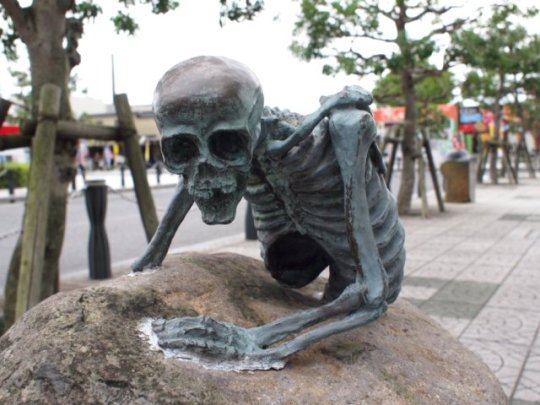
This is a case where a youkai was basically created with no mythological basis at all, either way though, the gashadokuro has already entered the popular imagination, and it's here to stay.
The relatively modern origins of the gashadokuro may have inspired how young Sese is, and why they are still able to mature themself.
The gashadokuro was further influenced by the legend of Takiyasha-hime (滝夜叉姫), specifically a mythologized telling of her story first found in the 17th-century yomihon novel series "The Tale of Utou Yasutaka's Loyalty" (善知安方忠義伝) by Santō Kyōden.
In the story, Takiyasha-hime and her half-brother Taira no Yoshikado secluded themselves in the ruins of the old Sōma palace after Taira no Masakado's death, where they started recruiting those still loyal to Masakado's cause.
When cornered by the warrior Ooya Tarou Mitsukuni, they summoned an army of skeletons and controlled them to fight back at Mitsukuni and his men.
Based on the story, Utagawa Kuniyoshi made the following famous woodblock print (much more famous than the original story), where a single giant skeleton was summoned instead.

This print was then used as the model for an illustration of a gashadokuro in the 1972 children's book "The Most Detailed Illustrated Encyclopaedia of Japanese Youkai" (いちばんくわしい日本妖怪図鑑), firmly cementing the idea that Takiyasha-hime summoned a gashadokuro to attack her enemies.
This explains Sese's claims to belong to royalty and why they have the same green hair as Fumikado does.
Who Was Sese Kitsugai?
One of the bigger mysteries surrounding Sese Kitsugai is who they were in life, or rather, who their skeleton was in life. To understand who they might have been, let's also take a look at:

A Great Youkai Who Still Hasn't Quite Returned — Sese Kitsugai
In RMI's hidden Ex+α stage, Sese absorbs all the souls that the players have collected so far and temporarily transforms into a state closer to their original form.
While they still haven't recovered their old memories, on account of still not having found their cranium, they act a bit differently from their usual childish self, and seemed to have realised something about this game's incident:
RMI Shrine Team Ex+α (Sese's lines only)
"Phew~. I've been revived!"
"I'm far from top form, but I guess this is still a big improvement."
"Oh yeah! It seems you've run into a lot of trouble because of Sese..."
[...]
"Nuh-uh, it was Sese's fault. Every last bit of it!"
While not outright confirmed, even only considering what we have from the original RMI, it seems to heavily imply that Sese was, in life, Taira no Masakado, the very person Fumikado was trying to revive.
Most telling is this line in the Music Room comments for Sese's Ex+α theme, Those Lurking in Unreality:
RMI Music Room: Those Lurking in Unreality
When you trace the whole thing back to its source, you could say
that this boss, in a way, is the main cause of the revival plot.
Their true identity might not be explained in the main story,
but there are some things that needn't be said, right?
For some additional evidence, there's Ex+α Sese's additional ability to "conquer the above-ground", which could possibly be a reference to Masakado's rebellious conquest of western Japan.
There's also Fumikado and Sese's conversation in BPoHC:
BPoHC New Emperor Team vs. Sese
Fumi "Something feels... weird about them."
Sese "Oh? One of you has the same hair color as Sese!
We ma~atch!"
Iyo "? Wait, what's this kid talking about...?"
Fumi "I don't know, but something feels seriously disconcerting."
[...]
Fumi "But we won't go easy, alright? After all, I am the New Emperor."
Sese "Sese's royalty too! Don't underestimate me!"
[...]
Fumi "[...] I wonder why this is, though?
For some reason, I feel like giving my all for this little one."
It might be that Fumikado feels so disconcerted about yet oddly devoted to Sese because they're facing Masakado himself, or at least, a youkai born out of his skeleton.
Potential Inspiration: Taira no Msakado
If we indeed work under the theory that Sese was born from Masakao's skeleton, then there might actually be a basis for why Sese's skeleton is scattered all across the place:
It is historically known that when Masakado was defeated in battle, his head was chopped off and carried back to the capital at the time, Heian-kyō (Kyoto), where it was put on public display.
There are several legends where, for various reasons, Masakado's head one day flew up into the air and flew eastward toward the Kantō region, but ran out of strength midway and fell.
A number of shrines and other locations claim to be where Masakado's head landed, but the Masakado Mound (将門塚) in Tokyo is definitely the most popular one.
Depicted below: The Masakado Mound at Toyko.
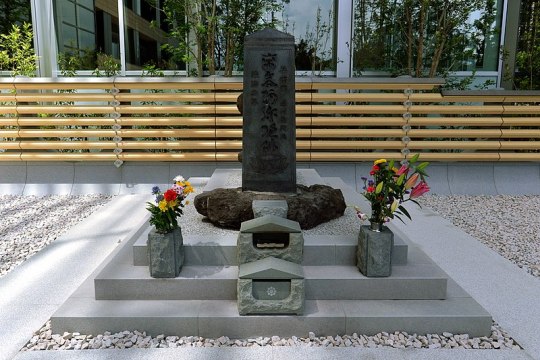
Similarly, there are a number of legends as to where and how Masakado's body was buried as well.
One example is that Masakado's younger brother, Taira no Masayori (平 将頼), gave the body a secret burial at the Enmei Monastery (延命院) in modern-day Bandō City, Ibaraki Prefecture.
Depicted below: Mound of Taira no Masakado's Body (平将門の胴塚) at Enmei Monastery

Unlike his head though, there's no singular popular legend about where Maskado's body is. Nevertheless, this confusion about where Masakado's corpse is buried, if at all, may have inspired the scattering of Sese's skeleton.
And that's all I have on Sese, an interesting figure that seems to have quite the curious past. I'm quite interested in seeing where their story will take them in the future, let's hope we get to see more~ :)
23 notes
·
View notes
Photo

"'Ningyo no zu": A woodblock-printed flier dated 5th month of Bunka 2 (1805)
“My sticker was Inspired by a woodblock print from 1805, currently owned by the waseda museum. - The text on the flair states that this particular mermaid was captured alive in Toyama bay - May 2nd, 1805 and that she was 10.6 meters (35ft) long. – There are actually several different drawings/woodblock fliers documenting this particular mermaid incident she might also be a variant of the yokai known as kamiike hime but this illustration is my favorite.” (from sticker website)
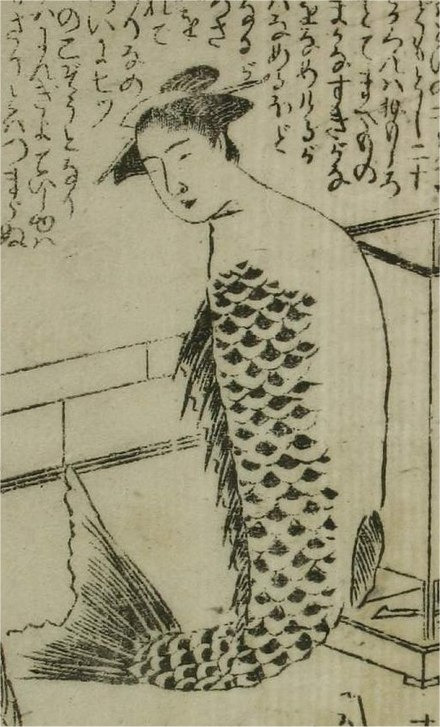
Japanese mermaid (ningyo).
Coiffed with nihongami hairstyle of the Edo Period.― Santō Kyōden Hakoiri musume menya ningyō (1791)
Japanese Ningyo 人魚
“The earliest records of the ningyo attested in written Japanese sources are freshwater beings allegedly captured in the 7th century, documented in the Nihon Shoki.[a] But subsequent examples are usually seawater beings.[5][b]
Its flesh is pleasant-tasting,[c] and the nun Yao Bikuni attained a 1,000-year longevity according to legend. However, catching a ningyo was believed to bring storms and misfortune, so fishermen who caught these creatures were said to throw them back into the sea. A ningyo washed onto the beach was an omen of war or calamity.[d]
An enduring legend relating to the ningyo concerns the eating of its flesh by a certain Yao Bikuni [ja] ("eight hundred [year old] Buddhist priestess') who is said to have gained longevity lasting 8 centuries.[7][8]”
Believed to have originated from Chinese Chiru; Ningyo refers to all types of fish/human hybrids
source
Modern interpretations by artists
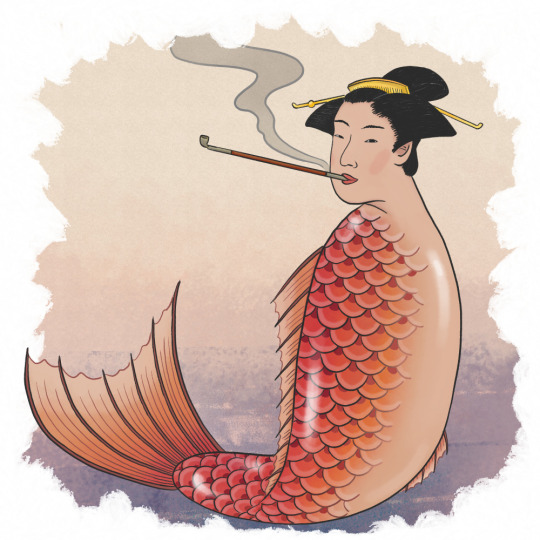
source

source
2 notes
·
View notes
Text
On this day in Wikipedia: Friday, 27th October
Welcome, Benvenuto, Välkommen, Bienvenida 🤗
What does @Wikipedia say about 27th October through the years 🏛️📜🗓️?

27th October 2019 🗓️ : Event - Christ Mocked
Christ Mocked (pictured) by Cimabue sold at auction in France for €19.5 million, a record for a pre-1500 artwork.
"Christ Mocked is a small 13th-century panel painting by the Italian artist Cimabue, in tempera on a poplar panel. It depicts the Mocking of Jesus and is one of three panels known from a polyptych depicting the passion of Jesus. It was discovered in the kitchen of an elderly woman in Northern..."

Image by Cimabue
27th October 2018 🗓️ : Event - Leicester City F.C.
Leicester City F.C. owner Vichai Srivaddhanaprabha dies in a helicopter crash along with four others after a Premier League match against West Ham United at the King Power Stadium in Leicester, England.
"Leicester City Football Club is a professional football club based in Leicester, in the East Midlands of England. They play their home matches at the King Power Stadium and compete in the EFL Championship, the second level of the English football league system. Leicester City were founded in 1884 as..."
27th October 2013 🗓️ : Death - Noel Davern
Noel Davern, Irish lawyer and politician, Minister for Education and Skills (b. 1945)
"Noel Davern (24 December 1945 – 27 October 2013) was an Irish Fianna Fáil politician who served as Minister of State from 1997 to 2002 and Minister for Education from 1991 to 1992. He served as a Teachta Dála (TD) for the Tipperary South constituency from 1969 to 1981 and 1987 to 2007. He served as..."
27th October 1973 🗓️ : Birth - Jason Johnson (baseball)
Jason Johnson, American baseball player
"Jason Michael Johnson (born October 27, 1973) is an American former Major League Baseball pitcher. He throws and bats right-handed...."

Image licensed under CC BY-SA 2.0? by madmiked on Flickr (Original version)
User UCinternational (Crop)
27th October 1923 🗓️ : Birth - Roy Lichtenstein
Roy Lichtenstein, American painter and sculptor (d. 1997)
"Roy Fox Lichtenstein (; October 27, 1923 – September 29, 1997) was an American pop artist. During the 1960s, along with Andy Warhol, Jasper Johns, and James Rosenquist, he became a leading figure in the new art movement. His work defined the premise of pop art through parody. Inspired by the comic..."

Image licensed under CC BY-SA 3.0? by Eric Koch for Anefo
27th October 1816 🗓️ : Death - Santō Kyōden
Santō Kyōden, Japanese poet and painter (b. 1761)
"Santō Kyōden (山東 京伝, 13 September 1761 Edo – 27 October 1816) was a Japanese artist, writer, and the owner of a tobacco shop during the Edo period. His real name was Iwase Samuru (岩瀬 醒), and he was also known popularly as Kyōya Denzō (京屋伝蔵, kyōya denzō). He began his professional career illustrating..."
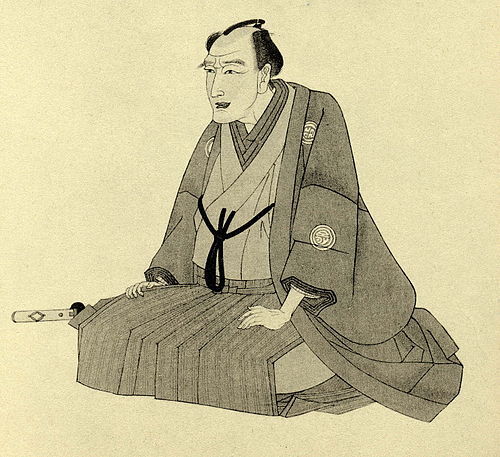
Image by Hannah
27th October 🗓️ : Holiday - World Day for Audiovisual Heritage
"The World Day for Audiovisual Heritage takes place every 27 October. This commemorative day was chosen by UNESCO (the United Nations Educational, Scientific and Cultural Organization) in 2005 to raise awareness of the significance and preservation risks of recorded sound and audiovisual documents..."
0 notes
Text

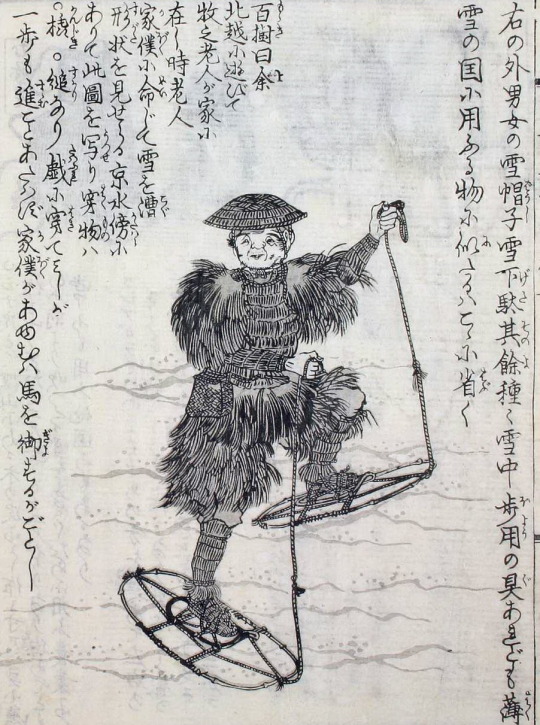



Illustrations from Hokuetsu Seppu.
From Wiki:
Hokuetsu Seppu (北越雪譜 "Snow stories of North Etsu Province"; translation: Snow Country Tales: Life in the other Japan by Jeffrey Hunter with Rose Lesser, Weatherhill, 1986) is a late Edo-period encyclopedic work of human geography describing life in the Uonuma area of Japan's old Echigo Province, a place known for its long winters and deep snow.
First published in Edo in 1837, Hokuetsu Seppu was written by Suzuki Bokushi (鈴木牧之) (1770–1842), a textile merchant and leading townsman of Shiozawa, a settlement on the old Mikuni Highway. The work, an immediate best seller that eventually encompassed seven chapters when a second volume was published in 1841, covers a wide range of local topics from the varieties of snow to the customs, lifestyles, local dialects, industries, and folk tales of Japan's snow country. The text covers 123 themes from multiple angles and is also richly illustrated with detailed sketches.
Santō Kyōzan (山東京山)—a gesaku writer and brother of Santō Kyōden—assisted with publication of the text. He wrote the preface and drew the illustrations, which were based on Bokushi's originals.
Some of the material in the book is of scientific interest. For example, it contains the first Japanese sketches of 86 types of natural snowflake crystals. An 1840 edition included an additional 97 sketches that Doi Toshitsura made with the aid of a microscope during his 20 years as daimyo of the Koga Domain. Thereafter, the snow crystal became a popular design motif on kimonos and on chawan, Japanese tea bowls.
Full set of scans of the books here, from Waseda University.
#history notes#historical notes#history reference#historical reference#history research#historical research#hokuetsu seppu#edo period#tales of the snow country#suzuki bokushi#santo kyozan#doi toshitsura#Japanese art#historical prints#historical books#shared
9 notes
·
View notes
Photo

The Ghost of Kohada Koheiji, Katsushika Hokusai, c. 1831-1832, Minneapolis Institute of Art: Japanese and Korean Art
Kohada Koheiji is an actor, believed to have lived in Edo later Edo Period. It's believed that his wife had an affair, conspired and killed him with her boyfriend, Koheiji became a ghost and haunted them, killed the wife, her lover went crazy and killed himself. This story later was written as a novel by Santō Kyōden in 1807, also made to be several Kabuki plays including the one by Tsuriya Nanboku in 1808, the other by Suzuki Senzaburō in 1925.
Size: 10 7/16 × 7 7/16 in. (26.5 × 18.9 cm) (image, sheet, vertical chūban)
Medium: Woodblock print (nishiki-e); ink and color on paper
https://collections.artsmia.org/art/65734/
1 note
·
View note
Text
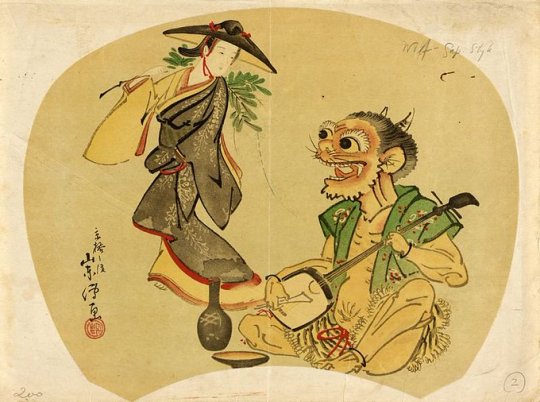
Wisteria Maiden Dancing for a Demon with a Samisen, by Santō Kyōden (1761-1816)
1 note
·
View note
Text
History of Manga

With a long history deeply rooted in rich Japanese art, the manga is one of the most fascinating phenomena in Japan and around the world. As part of the otaku (nerd) culture, these comics have been a major player in the country's publishing industry, creating a strong market, reaching millions of readers of all ages, and influencing a number of comic art on a variety of other nations.
From the history of adolescence and romance to futuristic science fiction and deep life themes, manga has become an important, almost inevitable, aspect of Japanese identity and has helped spread knowledge and understanding for all over the planet
Focusing on creating a unique aesthetic and seductive narrative, they often evolve into anime and even cosplay, constantly remaining popular within their community and their ever-expanding collectors.
What makes the manga remain popular and modern?
manga story
Examples from Shukan Shonen, one of the best-selling manga magazines in Japan. Image via takaski.com
What is the manga? A brief history
Although modern manga was produced amidst an expansion of artistic creativity during the American occupation of Japan between 1945 and 1952, its origins date back centuries. What many believed to be the first manga in Japan appeared in the 12th and 13th centuries, in a series of drawings like frogs and rabbits called Choju-Giga (Scrolls of Frolicking Animals) produced by various artists. In fact, his technique of drawing a character's legs to simulate running has been adopted by many manga-ka (manga creators and comic artists) working today [1]. During the Edo period (1603-1867), another drawing book, Toba Ehon, incorporated the manga concept, but the term itself was first used in 1798 to describe the Picture Book of Shiji no Yukikai ( Four Seasons) by Santō Kyōden. In 1814, it reappeared, under the title Aikawa Mina's Hyakujo Manga and the famous Hokusai Manga drawing books by the famous artist Ukiyo-e Hokusai.
the first examples of comics in history
Within Katsushika Hokusai's Mats books, it would be one of the earliest examples of comic books in history. Image via harvardartmuseums.org
Manga vs Anime
In Japanese, the term "manga" can refer to all kinds of cartoons, comics and animation, because it is made up of two kanji: "man", which means "fanciful or improvised" and "ga", which means "Images", forming together 漫画. That is why, historically speaking, read one punch man there could be many early examples that refer to the aesthetics and stories used in modern manga. Outside of Japan, "manga" is used to describe comics only while "anime" covers cartoons and animated comics of all kinds. Anime is usually, but not always, the animated version of the manga.
Dragon Ball is perhaps the most famous anime manga in manga history
Dragon Ball is perhaps the most famous anime manga. Image via YouTube
Manga in Japan occupied by the United States
After World War II, Japan found itself under occupation by the United States. It was an important event in the development of the manga. Americans have brought their own comics and cartoons, such as works by Disney, Mickey Mouse, Betty Boop, and Bambi, to the country, thus leaving a great impression on manga-ka. Japanese artists then brought their own style to life, primarily in newspapers and magazines that were looking for readers, and then evolved into weekly and monthly dedicated comic magazines that included a collection of approximately 10-20 series of series per issue. Among the first and to date the most successful manga artists were Osamu Tezuka, who created the famous Astro Boy, as well as Machiko Hasegawa, with his Sazae-san. Tezuka, known as the god of manga and the godfather of anime, invented the great prominent distinctive eyes in both areas. Astro Boy, for example, embodies aesthetics and as such quickly became, and has remained, immensely loved in Japan and elsewhere. On the other hand, Hasegawa's anime adaptation of Sasee-san drew more viewers than any other anime on Japanese television in 2011.
1 note
·
View note
Text
Manga History
The history of manga is said to originate from scrolls dating back to the 12th century, and it is believed they represent the basis for the right-to-left reading style. During the Edo period (1603–1867), Toba Ehon embedded the concept of manga. The word itself first came into common usage in 1798, with the publication of works such as Santō Kyōden's picturebook Shiji no yukikai (1798), and in the early 19th century with such works as Aikawa Minwa's Manga hyakujo (1814) and the Hokusai Manga books (1814–1834). Adam L. Kern has suggested that kibyoshi, picture books from the late 18th century, may have been the world's first comic books. These graphical narratives share with modern manga humorous, satirical, and romantic themes. Some works were mass-produced as serials using woodblock printing.
Writers on manga history have described two broad and complementary processes shaping modern manga. One view represented by other writers such as Frederik L. Schodt, Kinko Ito, and Adam L. Kern, stress continuity of Japanese cultural and aesthetic traditions, including pre-war, Meiji, and pre-Meiji culture and art. The other view, emphasizes events occurring during and after the Allied occupation of Japan (1945–1952), and stresses U.S. cultural influences, including U.S. comics (brought to Japan by the GIs) and images and themes from U.S. television, film, and cartoons (especially Disney).
Regardless of its source, an explosion of artistic creativity occurred in the post-war period, involving manga artists such as Osamu Tezuka (Astro Boy) and Machiko Hasegawa (Sazae-san). Astro Boy quickly became (and remains) immensely popular in Japan and elsewhere, and the anime adaptation of Sazae-san drawing more viewers than any other anime on Japanese television in 2011. Tezuka and Hasegawa both made stylistic innovations. In Tezuka's "cinematographic" technique, the panels are like a motion picture that reveals details of action bordering on slow motion as well as rapid zooms from distance to close-up shots. This kind of visual dynamism was widely adopted by later manga artists. Hasegawa's focus on daily life and on women's experience also came to characterize later shōjo manga. Between 1950 and 1969, an increasingly large readership for manga emerged in Japan with the solidification of its two main marketing genres, shōnen manga aimed at boys and shōjo manga aimed at girls.
In 1969 a group of female manga artists (later called the Year 24 Group, also known as Magnificent 24s) made their shōjo manga debut ("year 24" comes from the Japanese name for the year 1949, the birth-year of many of these artists). The group included Moto Hagio, Riyoko Ikeda, Yumiko Ōshima, Keiko Takemiya, and Ryoko Yamagishi. Thereafter, primarily female manga artists would draw shōjo for a readership of girls and young women. In the following decades (1975–present), shōjo manga continued to develop stylistically while simultaneously evolving different but overlapping subgenres. Major subgenres include romance, superheroines, and "Ladies Comics"
Modern shōjo manga romance features love as a major theme set into emotionally intense narratives of self-realization. With the superheroines, shōjo manga saw releases such as Pink Hanamori's Mermaid Melody Pichi Pichi Pitch Reiko Yoshida's Tokyo Mew Mew, And, Naoko Takeuchi's Pretty Soldier Sailor Moon, which became internationally popular in both manga and anime formats. Groups (or sentais) of girls working together have also been popular within this genre. Like Lucia, Hanon, and Rina singing together, and Sailor Moon, Sailor Mercury, Sailor Mars, Sailor Jupiter, and Sailor Venus working together.
Manga for male readers sub-divides according to the age of its intended readership: boys up to 18 years old (shōnen manga) and young men 18 to 30 years old (seinen manga); as well as by content, including action-adventure often involving male heroes, slapstick humor, themes of honor, and sometimes explicit sex. The Japanese use different kanji for two closely allied meanings of "seinen"—青年 for "youth, young man" and 成年 for "adult, majority"—the second referring to pornographic manga aimed at grown men and also called seijin ("adult") manga. Shōnen, seinen, and seijin manga share a number of features in common.
Boys and young men became some of the earliest readers of manga after World War II. From the 1950s on, shōnen manga focused on topics thought to interest the archetypal boy, including subjects like robots, space-travel, and heroic action-adventure. Popular themes include science fiction, technology, sports, and supernatural settings. Manga with solitary costumed superheroes like Superman, Batman, and Spider-Man generally did not become as popular.
The role of girls and women in manga produced for male readers has evolved considerably over time to include those featuring single pretty girls (bishōjo) such as Belldandy from Oh My Goddess!, stories where such girls and women surround the hero, as in Negima and Hanaukyo Maid Team, or groups of heavily armed female warriors (sentō bishōjo)
With the relaxation of censorship in Japan in the 1990s, an assortment of explicit sexual material appeared in manga intended for male readers, and correspondingly continued into the English translations. However, in 2010 the Tokyo Metropolitan Government passed a bill to restrict such content.
The gekiga style of storytelling—thematically somber, adult-oriented, and sometimes deeply violent—focuses on the day-in, day-out grim realities of life, often drawn in a gritty and unvarnished fashion. Gekiga such as Sampei Shirato's 1959–1962 Chronicles of a Ninja's Military Accomplishments (Ninja Bugeichō) arose in the late 1950s and 1960s partly from left-wing student and working-class political activism and partly from the aesthetic dissatisfaction of young manga artists like Yoshihiro Tatsumi with existing manga.

3 notes
·
View notes
Photo



ōgi-e 扇絵 - peinture sur éventails pliants (ōgi)
Artistes :
Taniguchi Gessō 谷口月窓 (1773-1865)
Shinozaki Santō 篠崎三島 (1736-1813)
Mori Kansai 森寛斎 (1813-1894)
14 notes
·
View notes
Text
𝑴𝒂𝒏𝒈𝒂 = 𝑪𝒐𝒎𝒊𝒄𝒔 ?
The Manga is always being compared with Comics, and why is that?
Maybe because of how both of them states stories with animations and pictures? But there is more than story lines and pictures. Searching data about these books will make our mind more open at how they differ in each other.
The word “manga” was first coined in 1798 by Santō Kyōden’s Shiki no Yukikai. And in 1814, the artist Katsushika Hokusai was the first to use the word “manga” as the title for his sketchbooks titled “Hokusai Manga”. Following the end of World War II, Japan was occupied by the Allies which restricted any propaganda or Japanese militarism. This meant that Japanese artists had room to explore their artistic styles. The United States brought over their comics and cartoons. This heavily influenced the style of manga at the time.That allowed Tezuka Osamu to create one of Japan’s most iconic and influential characters — Astro Boy.
Another famous stylistic innovator at the time was Machiko Hasegawa, creator of Sazae-san.
Both Osamu Tezuka and Machiko Hasegawa’s innovative techniques paved the way for shōnen (for young boys) and shōjo (for young girls) manga. The former being the most popular genre manga genre today.

Manga is originated from Japan and the words are usually Japanese or some of them translated it in English so that other people can read it. It is usually printed in black and white or some people make it colorized, it is read from left to right (back to front) and that may be the most different characteristic of manga to comics. It has more visuals than words, the story is usually presented with mor pictures so that people know what the characters are doing, and it consist of many as in MANY chapters and seasons, so it is a long story.
/A screenshot from the famous anime Haikyuu/
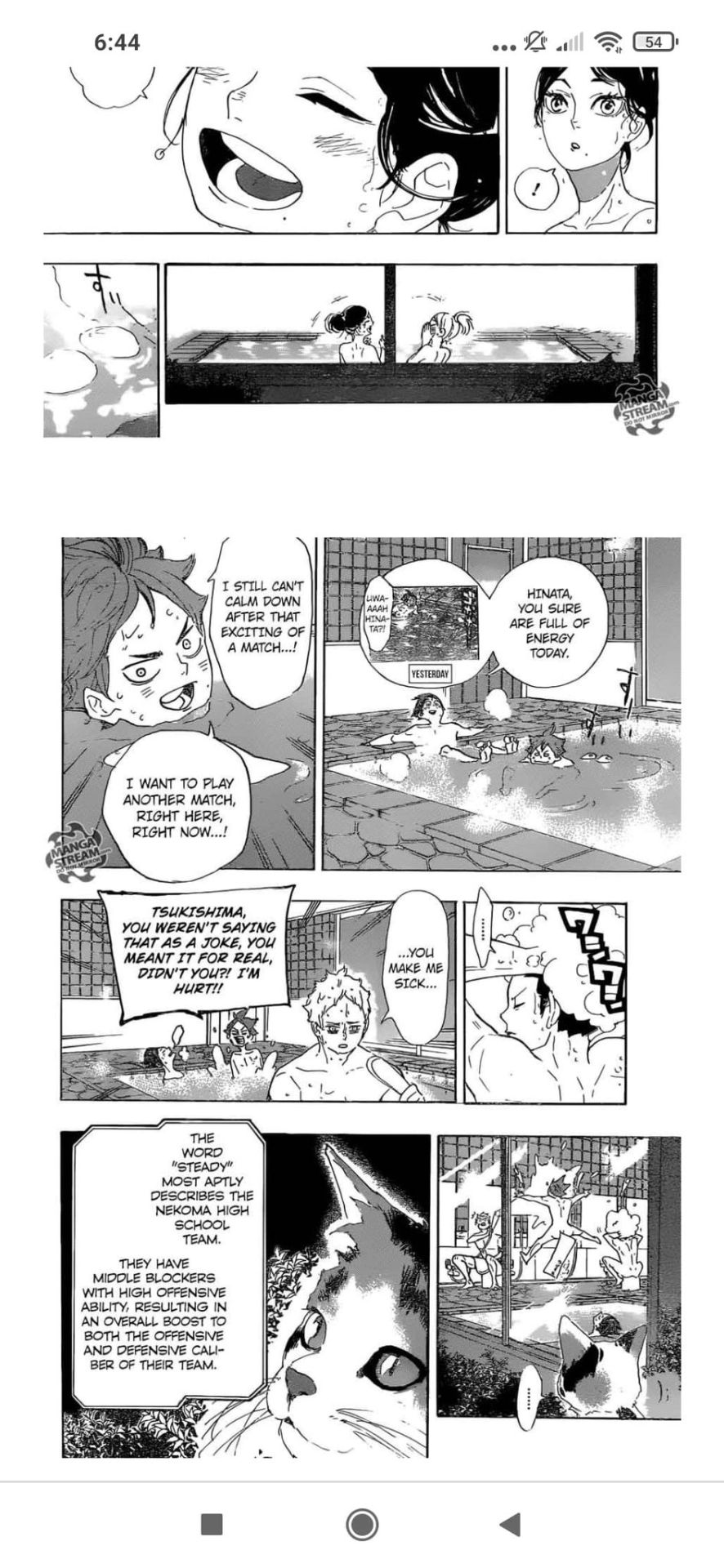
Comic strips first appeared in newspapers in the late 19th century, with popular strips collated into book form starting with The Yellow Kid in the US in 1895. In Europe, The Adventures of Tin Tin began in 1928 as a 2-page comic in the youth supplement of a Belgian newspaper. The late 1930s marked the arrival of the superhero genre with comic magazines featuring Superman and Batman, as well as British children’s comics The Dandy and Beano. The 1940s saw the release of Archie Comics and the Peanuts comic strip.

/ a scene from the Peanuts/

The Comic originated in America and usually written in English, unlike Manga it is colored, and is read from left to right (front to back). It is presented with too many words instead of pictures, you can understand the story with words. And it has only a short story but with many different books and story line, unlike in Manga, it has a lot of books but it stays within the story line.
That’s it! Thank you sooooo much for giving us the opportunity to differentiat books like this mwaa!
𝕋𝕚𝕖𝕣𝕣𝕒, ℂ𝕙𝕫𝕒𝕟𝕪𝕕 𝔾𝕖𝕟𝕖𝕧𝕚𝕖𝕧𝕖 𝔾.
𝔾𝕠, 𝕂𝕖𝕟𝕟𝕖𝕥𝕙
0 notes
Photo
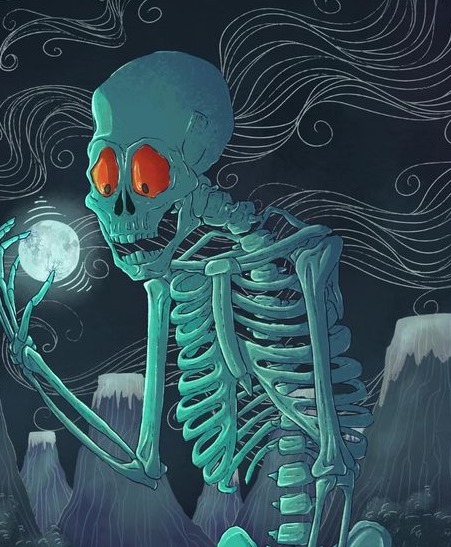
Gashadokuro (がしゃ髑髏, literalmente "esqueleto hambriento", también conocido como Odokuro, literalmente "esqueleto gigante") son criaturas míticas en la mitología japonesa.
Los Gashadokuro son espíritus que toman la forma de esqueletos gigantes y son quince veces más altos que una persona promedio, supuestamente creados a partir de los huesos acumulados de personas que murieron de hambre o en batalla, sin ser enterrados. Estos yōkai deambulan después de la medianoche, agarrando a viajeros solitarios y mordiéndoles la cabeza para beber su sangre. Hay una forma de saber de su cercanía, ya que la víctima oiría el sonido de un fuerte zumbido en el oído. Se dice que los Gashadokuro poseen los poderes de invisibilidad e indestructibilidad, aunque se dice que los encantos sintoístas te protegen de ellos.La tradición nipona indica que las almas de estas personas, incapaces de trascender al plano espiritual, renacen en el mundo como fantasmas hambrientos que viven en el eterno deseo de aquello que nunca tuvieron. Para hacer parte de un Gashadokuro, una persona tiene que haber muerto con ira y dolor en su corazón, energía que permanece incluso un largo tiempo después de que su carne ha desaparecido de su cuerpo.2Dicen las leyendas que en la mano derecha lleva una campanilla y que inconscientemente la va haciendo sonar, la única forma de huir de un ataque de este Yokai es escuchando la campanilla y esconderte donde no pueda verte.
El Gashadokuro es un yōkai que apareció por primera vez en forma impresa en la segunda mitad del siglo XX. Fue creado por los autores de las revistas shonen publicadas desde 1960–1970 e ilustró enciclopedias yōkai. El extraño thriller de Shigeaki Yamauchi, Obras completas 2: Monstruos del mundo (Akita Shoten, 1968) compiló artículos sobre yōkai de Saitō Ryokuu. Al mismo tiempo, también fue recogido por Shigeru Mizuki y Satō Aribumi, y desde su introducción, el Gashadokuro se hizo más conocido desde 1980 en adelante.
La ilustración en la Enciclopedia ilustrada del japonés Yōkai (1972) de Arabumi y la ilustración de Mizuki basan la aparición del Gashadokuro en el esqueleto gigante en la impresión de ukiyo-e de Utagawa Kuniyoshi, la Bruja Takiyasha y el Espectro del Esqueleto. No tiene conexión directa con el Gashadokuro, pero se dice que influyó en las representaciones modernas. La impresión de Kuniyoshi fue encargada en el período Edo por Santō Kyōden para un yomihon, que representa una escena en la que la hija de Taira no Masakado, Takiyasha-hime, convoca a un esqueleto yōkai para atacar al samurai Ooya Tarou Mitsukuni. Aunque originalmente se describió como muchos esqueletos de tamaño natural, Kuniyoshi lo describió como un único esqueleto gigante, como es característico de su trabajo.
0 notes
Text
Manga
The history of manga is said to originate from scrolls dating back to the 12th century, and it is believed they represent the basis for the right-to-left reading style. During the Edo period (1603–1867), Toba Ehon embedded the concept of manga. The word itself first came into common usage in 1798, with the publication of works such as Santō Kyōden's picturebook Shiji no yukikai (1798), and in the early 19th century with such works as Aikawa Minwa's Manga hyakujo (1814) and the Hokusai Manga books (1814–1834). Adam L. Kern has suggested that kibyoshi, picture books from the late 18th century, may have been the world's first comic books. These graphical narratives share with modern manga humorous, satirical, and romantic themes. Some works were mass-produced as serials using woodblock printing.

Writers on manga history have described two broad and complementary processes shaping modern manga. One view represented by other writers such as Frederik L. Schodt, Kinko Ito, and Adam L. Kern, stress continuity of Japanese cultural and aesthetic traditions, including pre-war, Meiji, and pre-Meiji culture and art. The other view, emphasizes events occurring during and after the Allied occupation of Japan (1945–1952), and stresses U.S. cultural influences, including U.S. comics (brought to Japan by the GIs) and images and themes from U.S. television, film, and cartoons (especially Disney).

Marketeers primarily classify manga by the age and gender of the target readership.[65] In particular, books and magazines sold to boys (shōnen) and girls (shōjo) have distinctive cover-art, and most bookstores place them on different shelves. Due to cross-readership, consumer response is not limited by demographics. For example, male readers may subscribe to a series intended for female readers, and so on. Japan has manga cafés, or manga kissa (kissa is an abbreviation of kissaten meaning tea drinking shop). At a manga kissa, people drink coffee, read manga and sometimes stay overnight.
0 notes
Text
Kitao Masanobu

『吉原傾城新美人自筆鏡』|New Mirror Comparing the Handwriting of the Courtesans of the Yoshiwara (Yoshiwara keisei shin bijin jihitsu kagami) by Kitao Masanobu (Santō Kyōden) Japanese, 1761-1816
https://blog.bibliotheque.inha.fr/fr/posts/shin-bijin-awase-jihitsu-kagami.html?fbclid=IwAR2z5vODSGPEOzusRD7F6jBgHYM4aQoEN8FFqGIp1SA9TEHfR8trYohRZSQ

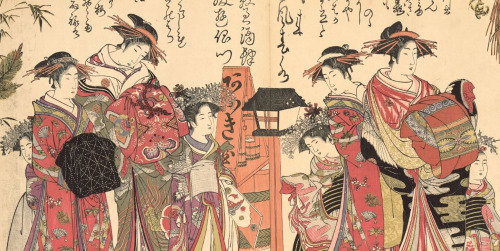
0 notes